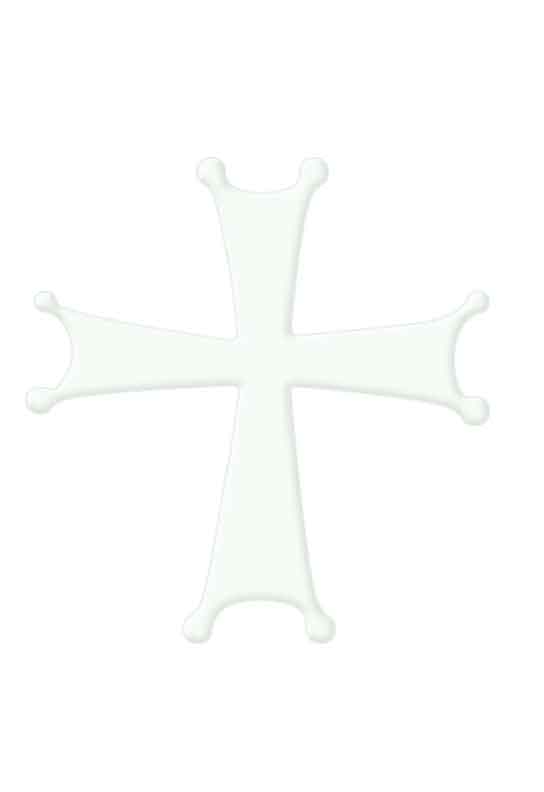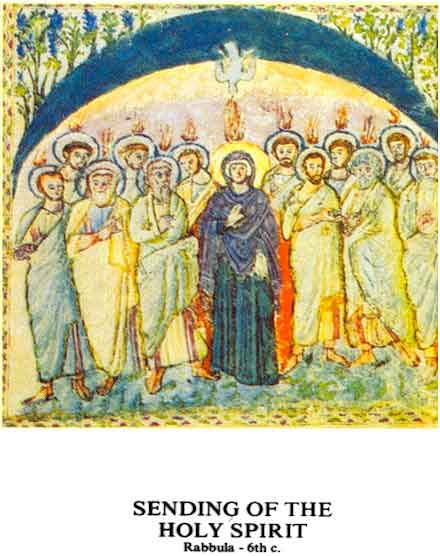|

�?STRONG>What is a Maronite?�?/STRONG> The Maronites are Catholics. Their orders and sacraments are recognized as valid by Catholic churches throughout the world. Catholics of any denomination can fulfill their obligations by attend mass at any Maronite church. Maronites are also admitted to communion and masses in all Catholic churches throughout the world. They Maronites originated in the East so the Maronites are referred to as the Eastern "rite" of the universal Catholic Church. There are nine different Eastern rites practicing in the United States.
What does Maronite Mean? The church gets its name from St. Maron. According to some sources, the history of the Maronites is not clear before the 16th century, and is not universally accepted. Theodoret of Cyr made the only record of St. Maron’s life by speaking with his followers and this is the source given for most information regarding St. Maron. According to the Maronite history, St. Maron was a mystic. He is considered to be the initiator of a form of monastic life lived in the open air called "hypethrism". St. Maron, a Syrian, went into solitude on a mountain and decided to devote his life to God. “He had no roof but heaven,�?they say. However, I did read that he did put up a small roof made of goat skins in case of rain. Theodoret states to choose Saint Maron's open air monasticism was “to opt for the most rigorous way to heaven, the most heroic way of detachment, sacrifice and mortification.�?/P> Hermits go into isolation in order to commune more closely with their higher powers without worldly distractions. However, St. Maron did not find this solitude he was seeking on his mountaintop. People came from near and far to see him in order to be healed physically and spiritually and to be under his guidance. He rededicated a pagan temple on the mountain and taught the gospel. He is known to have converted many people to Christianity. I am not surprised about this because St. Maron also embraced nature, and nature types of religion were probably very common during those times. His performance in life was also well noted. St. Maron is recognized for miracles and his dedicated life of teaching by being cannonized a saint. St. Maron is remembered for possessing an extraordinary desire to know God’s presence in all things. He felt that all was connected to God and God was connected to all. He did not separate the physical and spiritual world and actually used the physical world to deepen his faith and spiritual experience with God. Because of his deep desire, he was able to free himself from the physical world by his passion for prayer and enter into a mystical relationship with God St. Maron’s intensity of teaching and the example of his holy life led many converts to organize themselves into monasteries and call themselves "Maronite." They did this in order to symbolize the ideal which they attempted to follow. The earliest followers were trained by St. Maron himself, including St. Simon Stylites and St. Eusebius. St. Maron’s influence spread over a large area of Asia Minor, including Lebanon and Syria. St. Maron died around 410 A.D. and was willed to be buried in St. Zabina’s tomb in Kita in the region of Cyrrhus. It seems that not even his Earthly shell found solitude. The people from all different villages wanted to have him buried in their towns. According to Theodoret’s description of St. Maron’s burial place, it is believed to be town of Barad in the proximity of Kfarnabo. A huge church was built in that town around the beginning of the fifth century A.D. which contains a sarcophagus. This sarcophagus possibly contained St. Maron’s body. According to a Maronite tradition, the followers carried the relics of the Saint, especially the skull, to St. Maroun’s Monastery between Hama and Aleppo in Syria. The skull was carried to St. Maron’s Monastery in Kfarhai, Batroun, Lebanon around the turn of the eighth century. When Youhanna (John) Maron settled in Kfarhai, he built an altar and a monastery named after St. Maron and put St. Maron’s skull inside the altar to heal the faithful. That’s why the monastery is called "Rish Mro" (Syriac) meaning "Maron’s head" Still traveling for some reason, St. Maron’s skull was taken to Italy. In 1130 A.D. one of the Benedictine monks came to the region. During his visit he heard about "St. Maroun’s" skull, and upon returning home, spoke of St. Maron. The Bishop of Foligno carried the skull to his city in 1194 A.D. and put it in the church of the diocese. The faithful in the city made a statue of silver for St. Maron and put the skull in it. It is also mentioned that during his stay in Italy in 1887, Bishop Youssef el-Debs was given some relics of "St. Maroun’s" skull by the Bishop of Foligno. I wonder what happened to those?
You will find that many Maronites are from Lebanon. Unfortunately, the Maronite church has experienced persecution over many centuries. In order to survive, the Maronites took refuge in the mountains of Lebanon and cultivated their traditions. One of the interesting traditions kept was the use of Aramaic, the language that Christ and his disciples spoke among themselves. During the mass consecrations, the priest chants the narrative in Aramaic so we hear it in the language that Christ and his apostles used. In the early days of Christianity, theological questions were often fought over with intensity. Many Christians pondered over the nature of Christ, as I am sure some still do. The main question was, “Is Jesus God?�?nbsp; Some Christians reasoned that the divine nature of Christ was so powerful that it annihilated the human. The Ecumenical Council of Chalcedon in 451 decreed that monophysitism was a heresy and that Christ was both fully human and fully God. That is the doctrine of the Catholic Church to this day. Because of denying this dual nature of Christ, the Patriarch of Antioch, Severius, was replaced by a Catholic Patriarch by the name of Paul. This caused dissent among the Christians, and they split into two distinct groups. Apparently there was a time when there was a Catholic Patriarch holding to the faith as defined at Chalcedon and a non-Catholic Patriarch rejecting it who is anti-Chalcedonian. This fissure was eventually undone in the 16th century. After another century, another division affected the Church of Antioch, leaving three groups of Christians, the Syriacs, the Maronites, and the Melkites. From the seventh century, the original Church had given rise to five district communities, the Melkites, the Maronites, the Syriacs, the Assyrians, and the Armenians, each of which had its own Patriarch. In the twelfth century another Patriarch was added in the person of the Latin Patriarch. It is noted that the Marionite church now is the only Eastern-rite church that has no non-Catholic or Eastern Orthodox counterpart. (Just as a side note regarding some of the difficulties the people of the East have faced, I am familiar with some Assyrians. They no longer have a country, but they have organizations attempting to keep their culture from disappearing.) The Maronite Church Today. The Maronites are Roman Catholics in full communion with the Holy See of Rome. Today, the Pope of Rome is the head of all the Catholic churches. The “Patriarch of Antioch and All of the East�?is the title of the immediate head of the Maronite church under the Pope of Rome. The present patriarch, Nasrallah Boutros Sfeir, was elevated to the rank of Cardinal by Pope John Paul II and resides at Bekerkeh in Lebanon. He is a member of the College of Cardinals in Rome. He has liturgical and spiritual leadership over all the Maronites worldwide. The Roman Catholic Church is made up of many Eastern and Western Rites and the Maronites belong to the Syro-Antiochene rite of the one, holy, Catholic and Apostolic Church. The Maronite Church now spreads over the five continents with diocese and Eparchies in Lebanon, Syria, Cypress, Canada, the United States, Brazil, Mexico, Argentina, and Australia. The Maronites have their own Cannon law and liturgy. The liturgy is the body of rites prescribed for worship. The Maronite church is proud to have a liturgy that is one of the oldest of the Catholic Church. It is based on the liturgy of St. James the Less, the first bishop of Jerusalem. The liturgical language is Syriac, similar to the Aramaic language which Jesus spoke. The Maronite Church enjoys its own music, art, tradition, and architecture which gives it a uniqueness within the one Holy and Apostolic Church.

Pentecost, an example of a Maronite ikon from the Rabbula. The Maronite Surprise In putting this information together, I was surprised to learn that it is forbidden for Catholics of any Rite to change to another without Rome’s permission. (This actually comes down to getting permission from the Bishop who seeks permission from the Pope, if I understand correctly.) The Catholic rite you belong to is determined by where you received the sacraments. The sacraments include Baptism, Confession, Holy Communion, Confirmation, Anointing, and Marriage. (There is one more sacrament, and that is becoming a priest.) I was brought up and received all the sacraments in a Latin Rites church, so this left me wondering what I am. I am advised that the church I belong to serves Maronites and those of the Latin Rites also. Since I am baptized in a Latin Rites church, I am a Latin Rite Catholic. Now we actually have two types of Catholics in our family since my neices and nephews are Maronites. (My Mother teasingly called my brother father of the Maronites, and he became somewhat confused. We forgot to tell him later, so we have some catching up to do.) The church recognizes their different members by holding services for the differences that might exist. For instance, a Latin rite Catholic celebrates Ash Wednesday and a Maronite celebrates Ash Monday, so there are services on both days. We all sit together and have Mass on Sunday, probably with many of us not even knowing the difference? I asked if there was any purpose to requesting to be a Maronite, since I am a member of the church and received all the sacraments. A person only has one time in a lifetime where they can change rites. I was advised that there are some that do seek to become Maronites because they wish to serve in the Masses as Deacons or Priests. Women are not allowed to be priests in the Catholic religion, so I do not have many reasons to request a change that I am aware of. There is a historical reason that individuals must request permission to change rites. There was a time many Eastern rite churches were separated from Rome. Overtime, many of these separated Eastern rite churches were reunited with Rome. Whenever an Eastern church reunited with Rome, there was a tendency for Catholics of one rite to switch to another. In order to preserve the Eastern rite, which is smaller in numbers than the Roman rite, several Popes repeated the prohibition of changing from one rite to another. The purpose of this rule is actually to protect the Maronite church. People from the East have flocked to other countries because of religious persecution and wars. They are a minority church struggling to survive in new lands in many cases, and it would be difficult for them to lose members. This does not forbid Catholics, however, from receiving rites from other types of Catholic churches.
Page 2 Page 3 Page 4 |
 Free Forum Hosting
Free Forum Hosting